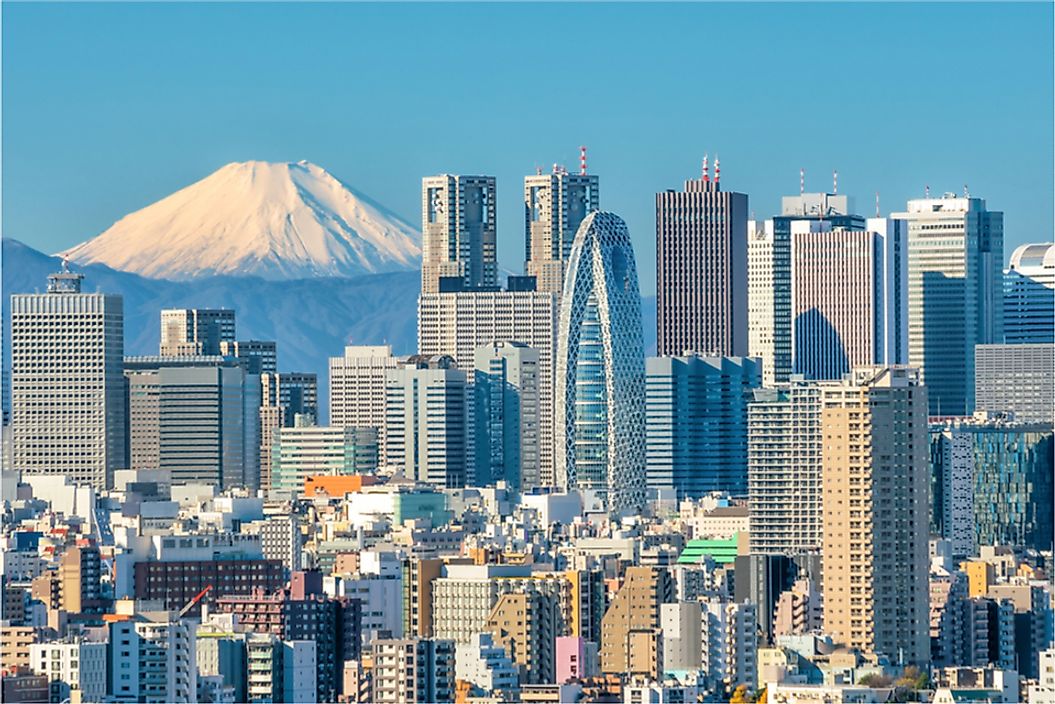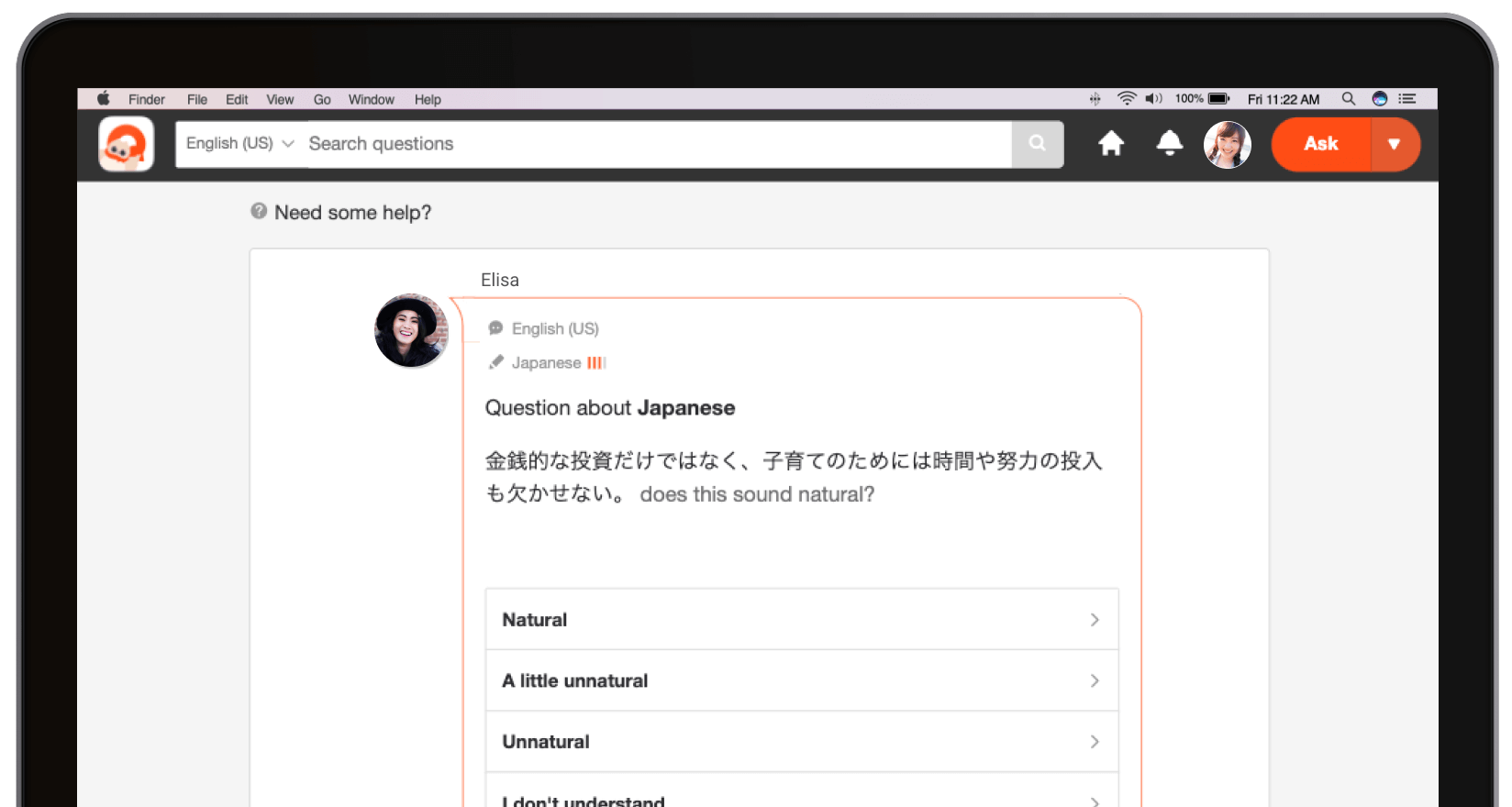What continent is japan in
What continent is japan in
What Continent Is Japan In?
Tokyo is the capital and largest city in Japan.
Japan is a volcanic island nation located in East Asia. The capital is Tokyo, which is also the country’s biggest city. Japan is made up of a group of islands totaling 6,852. The country has a population of approximately 127 million, which is the tenth biggest population in the world. The biggest islands are Hokkaido, Honshu, Shikoku, and Kyushu, which make up 97% of Japan’s land area. The four islands are called the home islands. Nihon is the nation’s Japanese name, and it means «land of the rising sun.» The country’s national language is Japanese, although there are 11 other recognized languages spoken in the country. The country has a constitutional monarchy, and Emperor Akihito has been in power since 1989.
Japan’s Economy
Japan has a strong education system and ranks as one of the top countries in the world in terms of literacy, maths, and sciences, which contribute significantly to the nation’s workforce and economy. Japan is the fourth biggest exporter and importer in the world, and during the early 1900s the country’s nominal GDP was nearly as large as the rest of Asia combined. The country is home to some of the world’s biggest and most technologically advanced industries. Japan’s unemployment rate stands at 4%, which is one of the lowest in the world, and has one of the lowest taxation rates in the world. Japan’s car industry is the third largest in the world, and is home to Toyota, which is the world’s largest automotive manufacturer. Additionally, 13% of the country’s land is used for agriculture, especially rice, and there is a strong fishing sector that yields approximately 15% of the world’s annual catch. Japan also has a strong tourism industry that receives millions of tourists each year.
Natural Disasters
Japan has 108 active volcanoes, some of which emerged during the 20th century. The country is also prone to tsunamis and earthquakes, which usually occur every century. In 2013, the country was ranked fifteenth in the world in terms of highest disaster risk. The most notable earthquakes include the March 11, 2011, Tohoku earthquake, the Great Hanshin earthquake of 1995, and the Tokyo earthquake of 1923.
The Continent of Asia
Japan is located on the continent of Asia. Asia is the biggest of the seven continents and has the highest population. The continent covers an area of 17,212,000 square miles and has a population of 4.5 billion people, which represents 60% of the world’s population. Asia is surrounded by the Arctic Ocean to the north, the Indian Ocean to the south, and the Pacific Ocean to the east. Many of the world’s religions originated from Asia. Asia has the second highest nominal GDP, behind Europe, but ranks first in terms of purchasing power parity GDP. Economic growth in Asia has primarily been experienced in Japan, Taiwan, Hong Kong, South Korea and Singapore. These countries are now developed states with the highest GDP in Asia.
Japan
Our editors will review what you’ve submitted and determine whether to revise the article.
Our editors will review what you’ve submitted and determine whether to revise the article.
Read a brief summary of this topic
Japan, island country lying off the east coast of Asia. It consists of a great string of islands in a northeast-southwest arc that stretches for approximately 1,500 miles (2,400 km) through the western North Pacific Ocean. Nearly the entire land area is taken up by the country’s four main islands; from north to south these are Hokkaido (Hokkaidō), Honshu (Honshū), Shikoku, and Kyushu (Kyūshū). Honshu is the largest of the four, followed in size by Hokkaido, Kyushu, and Shikoku. In addition, there are numerous smaller islands, the major groups of which are the Ryukyu (Nansei) Islands (including the island of Okinawa) to the south and west of Kyushu and the Izu, Bonin (Ogasawara), and Volcano (Kazan) islands to the south and east of central Honshu. The national capital, Tokyo (Tōkyō), in east-central Honshu, is one of the world’s most populous cities.
The Japanese landscape is rugged, with more than four-fifths of the land surface consisting of mountains. There are many active and dormant volcanoes, including Mount Fuji (Fuji-san), which, at an elevation of 12,388 feet (3,776 metres), is Japan’s highest mountain. Abundant precipitation and the generally mild temperatures throughout most of the country have produced a lush vegetation cover and, despite the mountainous terrain and generally poor soils, have made it possible to raise a variety of crops. Japan has a large and, to a great extent, ethnically homogeneous population, which is heavily concentrated in the low-lying areas along the Pacific coast of Honshu.
Complexity and contrast are the keynotes of life in Japan—a country possessing an intricate and ancient cultural tradition yet one that, since 1950, has emerged as one of the world’s most economically and technologically advanced societies. Heavy emphasis is placed on education, and Japan is one of the world’s most literate countries. Tension between old and new is apparent in all phases of Japanese life. A characteristic sensitivity to natural beauty and a concern with form and balance are evident in such cities as Kyōto and Nara, as well as in Japan’s ubiquitous gardens. Even in the countryside, however, the impact of rapid Westernization is evident in many aspects of Japanese life. The agricultural regions are characterized by low population densities and well-ordered rice fields and fruit orchards, whereas the industrial and urbanized belt along the Pacific coast of Honshu is noted for its highly concentrated population, heavy industrialization, and environmental pollution.
The reopening of the country ushered in contact with the West and a time of unprecedented change. Japan sought to become a modern industrialized nation and pursued the acquisition of a large overseas empire, initially in Korea and China. By late 1941 this latter policy caused direct confrontation with the United States and its allies and to defeat in World War II (1939–45). Since the war, however, Japan’s spectacular economic growth—one of the greatest of any nation in that period—brought the country to the forefront of the world economy. It now is one of the world’s foremost manufacturing countries and traders of goods and is a global financial leader.
Japan is bounded to the west by the Sea of Japan (East Sea), which separates it from the eastern shores of South and North Korea and southeastern Siberia (Russia); to the north by La Perouse (Sōya) Strait, separating it from Russian-held Sakhalin Island, and by the Sea of Okhotsk; to the northeast by the southern Kuril Islands (since World War II under Soviet and then Russian administration); to the east and south by the Pacific; and to the southwest by the East China Sea, which separates it from China. The island of Tsushima lies between northwestern Kyushu and southeastern South Korea and defines the Korea Strait on the Korean side and the Tsushima Strait on the Japanese side.
Relief
The mountainous character of the country is the outcome of orogenic (mountain-building) forces largely during Quaternary time (roughly, the past 2.6 million years), as evidenced by the frequent occurrence of violent earthquakes, volcanic activity, and signs of change in sea levels along the coast. There are no sizable structural plains and peneplains (large land areas leveled by erosion), features that usually occur in more stable regions of the Earth. The mountains are for the most part in a youthful stage of dissection in which steep slopes are incised by dense river-valley networks. Rivers are mostly torrential, and their valleys are accompanied by series of river terraces that are the result of movements in the Earth’s crust, as well as climatic and sea-level changes in Holocene times (i.e., the past 11,700 years). Recent volcanoes are juxtaposed with old and highly dissected ones. The shores are characterized by elevated and depressed features such as headlands and bays, which display an incipient stage of development.
The mountains are divided into many small land blocks that are separated by lowlands or deep saddles; there is no long or continuous mountain range. These land blocks are the result of intense faulting (movement of adjacent rock masses along a fracture) and warping (bending of the Earth’s crust); the former process is regarded as dominant. One consequence is that mountain blocks are often bounded by fault scarps and flexure slopes that descend in step formation to the adjacent lowlands.
Coalescing alluvial fans—cone-shaped deposits of alluvium that run together—are formed where rivers emerge from the mountains. When the rivers are large enough to extend their courses to the sea, low deltaic plains develop in front of the fans; this occurs most frequently where the rivers empty into shallow and sheltered bays, as in the deltas of Kantō (Kwanto), Nōbi, and Ōsaka. In most places, however, fan surfaces plunge directly into the sea and are separated by low, sandy beach ridges.
Япония
Япония (Japan)
Япония – одно из самых развитых государств мира с тысячелетней историей, самобытной культурой и традициями. Это страна контрастов: возделывающей рис сельской глубинки и многомиллионного Токио, буддистских монахов и одержимых модой тинейджеров, торжественных религиозных ритуалов и шума игорных залов патинко, изысканной храмовой архитектуры и многоэтажных бетонных коробок. Япония расположена в Восточной Азии, на 6852 островах. Самые крупные: Хонсю, Хоккайдо, Кюсю и Сикоку, составляющие 97% всей территории. Японский архипелаг берет свое начало от Охотского моря на севере и простирается далеко на юг до Восточно-Китайского моря и острова Тайвань. Несмотря на сравнительно небольшую площадь – 377 944 км², страна густо населена. По данным 2018 года, здесь проживает 126 225 000 человек. По этому показателю маленькая Япония уступает огромной России всего на 17,2 млн человек.
Сэкономь на путешествии в Японию!
Видео: Япония
Общая информация
В Японии трепетно относятся к исторической преемственности, что подтверждает и наличие института монархии как символа единства народа. Только в этой стране и нигде больше монарха называют императором, и должность эта появилась очень давно, еще в 660 году до н. э. Несмотря на внешний консерватизм и следование традициям, японцы современны и делают огромные успехи в области высоких технологий, робототехники и биомедицины. На науку правительство затрачивает баснословные средства – 130 млрд долларов США в год. Более 700 тыс. ученых задействовано в различных исследованиях. Среди них 13 лауреатов Нобелевской премии, три обладателя Филдсовской премии и один получивший премию Гаусса.
Токио Бамбуковый лес Огни ночного Токио Гора Фудзияма — самая узнаваемая из достопримечательностей Японии Святилище Ицукусима — одно из популярнейших в Японии туристических мест
Удивительно, но при таком научно-техническом прогрессе и высоком уровне урбанизации японцы умудряются сохранять окружающую природную среду. Не говоря уже о богатом наследии старины: замки, дворцы, памятники, храмы дошли до наших дней практически в первозданном виде. Миллионы туристов каждый год ступают на эту древнюю землю, не переставая интересоваться историей Японии, подчас трагической, и восхищаться местными достопримечательностями.
В чем же секрет успеха островного государства, расположенного, к тому же, в сейсмоопасной зоне? Каждый иностранец по-своему отвечает на этот вопрос. Одни основу процветания видят в особенностях местного менталитета, другие – в эффективной системе управления, третьи – в фактическом отсутствии расходов на военные цели. Интересно, какую разгадку этого феномена найдете для себя вы, когда побываете в Японии и поближе познакомитесь с этой своеобразной страной?
Города Японии
История Японии
В эпоху палеолита Японские острова соединялись с материком перешейками. Первобытное население промышляло собирательством и охотой и делало первые шаги в направлении прогресса, изготавливая каменные орудия труда. Местная керамика, появившаяся примерно 10 тыс. лет назад, считается старейшей в мире. А в летописях китайской империи Хань (I век н. э.) встречаются первые упоминания об античной Японии, населенной народом вадзин, имевшим «100 малых стран». Уже в IV веке была заметна тенденция к объединению вокруг одного из государств – Ямато, впоследствии ставшего федерацией. В конце VI века его правитель принц Сётоку взял курс на централизацию. В 604 году монарх выпустил легендарную «Конституцию 17 статей», где монархия провозглашалась высшим органом власти.
Железный доспех времен Ямато
Одновременно происходило усиление самураев, которых принимали на ключевые должности императорского двора. Они позиционировали себя как отдельное сословие и нередко поднимали бунты против правительства. Мятежи одних самураев подавлялись силами других, поскольку армии как таковой в стране еще не было. В XIV веке военно-феодальная система управления, известная как сёгунат, пришла в упадок, и династия Ходзё пошла по пути еще большей централизации. Это не понравилось самураям в регионах. Начались восстания, закончившиеся полной ликвидацией сёгуната и всей упомянутой династии. Впоследствии, в 1338-1573 гг., в Японии установился новый сёгунат, известный как период Муромати, а также своим курсом на децентрализацию.
Реконструкция стоянки Ёсиногари
В это время Кабинет министров сформировал Тайный совет, подготовил новую редакцию Конституции и собрал парламент. Так в Японии начался период политических, военных и социально-экономических преобразований, названный по имени 16-летнего императора Реставрацией Мэйдзи. Реформы обеспечили стране индустриальное господство в мире и привели к военным победам над Китаем и Россией соответственно в 1894-1895 и 1904-1905 годах. Присоединив к себе Южный Сахалин, Тайвань и Корею, могущественная островная империя стала полноправной хозяйкой окрестных морей.
Флаг Императорской армии Японии
Начало XX века ознаменовалось ростом милитаристских и экспансионистских настроений в стране. Япония включилась в Первую мировую войну, став союзницей Антанты. Вследствие этого возросло ее влияние, умножались территориальные приобретения. В захваченной Маньчжурии в начале 30-х годов Япония образовала квазигосударство Маньчжоу-Го, а во второй их половине вступила в союзнические отношения с Третьим рейхом, подписав Антикоминтерновский пакт. В тот же период она поставила свою подпись под Пактом о взаимном нейтралитете с СССР. Документ предусматривал уважение Токио суверенитета и целостности Маньчжоу-Го и Монгольской Народной Республики. Что, однако, не помешало Японии начать вторую войну с Китаем. В декабре 1941 года она, напав на Пёрл-Харбор на Гавайях, объявила войну Соединенным Штатам и Великобритании. Дальше последовало завоевание Гонконга, Малакки и Филиппин.
Нагасаки после атомной бомбардировки в 1945 году Нагасаки в наши дни
9 августа 1945 года Советский Союз объявил войну Японии. Это произошло уже после атомных бомбардировок американской авиацией Хиросимы и Нагасаки. Квантунская армия потерпела поражение и некогда могущественная империя 2 сентября подписала Акт о безоговорочной капитуляции. В 1947 году в Стране восходящего солнца была принята новая пацифистская Конституция. 8 сентября 1951 года был заключен Сан-Францисский мирный договор, официально поставивший точку во Второй мировой войне и лишивший дальневосточного агрессора всех территориальных приобретений. СССР вернул контроль над югом Сахалина и Курильскими островами. Однако Япония не признала присоединение Южных Курил (острова Итуруп, Кунашир, Шикотан и Хабомаи), называя это «проблемой северных территорий», поэтому, несмотря на наличие дипломатических отношений, мирный договор между нашими странами не подписан до сих пор.
Природа
Местный природный ландшафт отличается значительным разнообразием. На его формирование повлияло расположение Японии на крупном архипелаге с множеством стратовулканов. 10% мировой вулканической активности и до полутора тысяч землетрясений в год в 4-6 баллов – всё это местные реалии. А колебания почвы с меньшей магнитудой в разных регионах и вовсе ежедневное явление: население на периодические вздрагивания зданий даже не реагирует.
Дорога в хвойном лесу на севере Хоккайдо
Флора Японских островов отличается не меньшей пестротой. На севере произрастают деревья хвойных пород. В центре и юге имеются, соответственно, смешанные и субтропические леса. Всего в стране свыше 2700 видов различных растений, из которых 168 – только деревьев. Самое известное дерево Японии – это, конечно, сакура. Лесными массивами, а также кустарниковыми зонами и горными вершинами заняты две трети территории архипелага. Тут часты оползни и тайфуны, не говоря о землетрясениях, что сделало эти территории непригодными ни для проживания, ни для сельскохозяйственной и промышленной деятельности.
Водопад в национальном парке Ёсино-Кумано
Фауна Японии представлена бурым медведем, горностаем, соболем, лаской – они встречаются на острове Хоккайдо. На Хонсю вольготно себя чувствуют лисица, волк, заяц, енотовидная собака, барсук, выдра. Здесь и на южных островах обитает черный медведь, антилопа, японская макака и даже исполинская саламандра. Из птиц выделим дятла и синицу, ласточку и аиста, тетерева и ястреба, орла и сову, дрозда и журавля: перечень такой, будто речь о России.
Японская антилопа Черный медведь Японская исполинская саламандра Храм Хаконэ на озере Аси
Крупнейшие озёра и реки Японии, где встречаются сом, карп, минога, угорь, расположены на больших островах. Из-за особенностей местного ландшафта русла рек не очень протяженные, едва превышают 200 км. Самая длинная река страны – Синано, несущая свои воды на острове Хонсю. Вторая по длине – Тонегава: активно используется для судоходства и рыбного промысла. Здесь же устраиваются первенства по рафтингу – спортивным сплавам по горным рекам. А водной артерией Хоккайдо является Исикари, берущая начало в горах. Из озёр самое крупное в Японии – Бива; его площадь – 640 км². Многие пресные водоемы – Аси, Синано и другие – образовались в кратерах спящих вулканов. В прибрежной зоне имеются соленые озера. Например, Касумигаура – второе по величине в стране.
Климат и погода
Хотя Япония – страна небольшая, у нее есть целых шесть климатических зон. Температурный режим колеблется от достаточно прохладного на севере (остров Хоккайдо) до субтропического в южных регионах (острова Рюкю, Бонинские острова). Климатические показатели прямо зависят от сезонных перемещений атмосферного воздуха. Так, зимой со стороны Японского моря дует северо-восточный ветер, который пригоняет облака со всеми вытекающими последствиями – сильными снегопадами.
Лето в заповеднике Асо-Кудзу Зима в Японии Весна — время цветущей сакуры
Сезонные ветры определяют погоду и в зоне Тихого океана. Для этой местности характерны редкие снегопады, но зимы холодные. Лето же обычно влажное и жаркое благодаря влиянию сезонного юго-восточного ветра. На крайнем юго-западе, как уже было отмечено, господствует субтропический климат. Зима здесь теплая, а лето жаркое. Наблюдается высокий уровень осадков, и даже есть свой сезон дождей. Нередки тайфуны.
Погода — очень популярная, неиссякаемая тема для разговоров в течение всего года, в особенности дождь, приход которого в большинстве случаев непредсказуем. По этой причине прочный складной зонт — непременный предмет экипировки всякого просвещенного путешественника по Японии. Если, не имея зонта, попадете под проливной дождь, укройтесь в ближайшем магазинчике.
Достопримечательности
Знакомство с достопримечательностями Японии начнем с Императорского дворца в Токио в специальном районе Тиёда. Он функционирует как официальная резиденция главы государства императора Акихито и как музей, где туристы могут познакомиться с японской историей, культурой и искусством. Дворец возведен на руинах старого замка Эдо, уничтоженного пожаром. В резиденции открыто много залов для приемов, а сама она окружена садами в традиционном японском стиле.
Императорский дворец в Токио
Одним из символов Японии и самой высокой горой страны является Фудзияма (или Фудзи). Гора находится на острове Хонсю в 90 км юго-западнее столицы, ее высота – 3776 метров. Фудзияма хорошо узнаваема благодаря своему симметричному конусу. Этот вулкан любят фотографировать и часто изображают на сувенирах или картинах. Ежегодно Фудзияму покоряет свыше 200 тысяч человек, затрачивая на подъем 5-8 часов (спуск обычно занимает меньше времени).
Фудзияма Телевизионная башня Токио
А вот главным символом столицы считается Токийская телевизионная башня, высота которой составляет 332,6 метра. Сооружение проектировалось «с оглядкой» на Эйфелеву башню в Париже: его структура такая же решетчатая. Появилась она на 69 лет позже своей французской «сестры». Телебашня в Токио стала воплощением самых современных технологий. С её смотровых площадок открывается потрясающий вид не только на город, но и окрестности. Здесь находятся магазины и рестораны, где можно отовариться и вкусно поесть.
Переместимся в Киото, столицу Японии с 794 по 1869 год. Расположенный в центральной части крупнейшего острова Хонсю, он знаменит одной из самых популярных достопримечательностей страны – буддийским Храмом Золотого павильона или Кинкаку-дзи. Его возвели в конце XIV века, но в 1950 году его сжег монах, страдавший, очевидно, психическим расстройством. В 1955-м храм был восстановлен и представляет собой точную копию оригинала. Кинкаку-дзи покрыли сусальным золотом, дающим красивое отражение в окрестном пруду.
Кроме местных святилищ для посещения туристами открыты и старинные замки, которых в Стране восходящего солнца сохранилось около полусотни. Многие дошли до нашего времени практически в первозданном виде, другие подверглись разрушениям в ходе Второй мировой войны. Так, к старейшим из них относится замок Инуяма (XV век). Он находится всего в часе езды от города-порта Нагоя, административного центра префектуры Айти. Замок хорошо сохранился, имеет самобытную архитектуру. Объекту присвоен высокий статус Национального сокровища, которого удостаиваются далеко не все памятники.
К самым красивым замковым комплексам относится и замок Нидзё в Киото – объект Всемирного наследия ЮНЕСКО и Национальное сокровище Японии. В начале XVII века его возвел Иэясу, первый сёгун из династии Токугава. Кроме центрального сооружения – дворца Ниномару – в нем есть множество построек, разбито несколько садов. В саду Сэйрю-эн муниципальные власти проводят официальные приемы для гостей города, а для самих киотцев – чайные церемонии.
Замок Нидзё в Киото Реставрированный «Судзакумон» («ворота Красного феникса») в Хэйдзё
Нельзя обойти вниманием и японские памятники. На привычные для нас скульптуры и бюсты, украшающие площади и парки в российских городах, они совсем не похожи. Возраст многих исчисляется тысячей лет. Древние представители буддизма, например, оставили в наследство потомкам статуи в районе Хорю-дзи префектуры Нара. К ним, дошедшим до нас сквозь столетия, и сегодня приходят помолиться не только верующие, но и туристы. В самом городе Нара тоже можно осмотреть много великолепных памятников старины. Часть из них сосредоточена во дворце Хэйдзё, который в VIII веке был резиденцией японских императоров.
Мемориал мира в Хиросиме
Национальный парк Асо-Кудзю Пляж острова Хатерума Национальный парк Никко Национальный парк Сиретоко Тропический лес острова Якусима
О национальных парках Японии следует сказать особо, поскольку местный уклад преимущественно урбанистический и вопросы охраны окружающей среды стоят тут как нельзя остро. В центральной части острова Хонсю находится один из самых известных парков: Фудзи-Кью Хайлэнд. Его доминанта – легендарная Фудзияма. И японцы, и туристы любят отдыхать у подножия этого самого красивого в мире конического вулкана, которое называется «Район пяти озёр». В парке сосредоточено немало античных храмов, есть водопады и термальные источники.
What continent is japan in
They are the same, for both questions I would answer Asia
The Language Level symbol shows a user’s proficiency in the languages they’re interested in. Setting your Language Level helps other users provide you with answers that aren’t too complex or too simple.
Has difficulty understanding even short answers in this language.
Can ask simple questions and can understand simple answers.
Can ask all types of general questions and can understand longer answers.
Can understand long, complex answers.


Solve your problems more easily with the app!

27 Country Names in Japanese 🌍 Your Complete Guide
Guide to Countries in Japanese // Discover Countries, Continents and a FREE Quiz
Are you interested in learning some Countries in Japanese? Great, because this super guide will give you all the country names you need to know (plus a few bonus extras)!
Even though country names are basically untranslatable, there are “some” differences in terms of pronunciation when we learn the country names in Japanese.
First of all, you should know that the Japanese-English translation is based on ローマ字 (Romaji).
This is Latin alphabetical letters that correspond to every Japanese sound, as Hiragana and Katakana.
There are 5 vowels in Japanese (a, i, u, e, o), and every romaji ends with one of them (except ん which is the N sound).
On the other hand, there are many English sounds just with consonants, that do not vowels.
Even though there are many Japanese letters, the number of Japanese sounds is actually less than in English, so there are many sounds that are distinguished differently in English but are in fact the same in Japanese.
So with that little introduction, now we will reveal some of the most famous country names in Japanese.
If you would like your home country included, do drop us a comment below and we will gladly add it for you!
Countries in Japanese – Country Names in Kanji
Countries in Japanese – Continents
Countries in Japanese – Your Nationality in Japanese
BONUS – Free Quiz
Countries in Japanese – FAQ’s
PlayCountries in Japanese – Similar to English
These are two of the easiest ones with common vowels in English and Japanese.
Since the Japanese language essentially does not have the “C” and “X” sounds, “K” is used instead.
‘Spain’ is also a country in Japanese that sounds like the English version.
First, the “S” needs to be with the vowel, in this case a “U” is used, following the rule that every letter has a vowel.
In addition, the “A” turns to an “E”. Even though the Japanese language also has an “A”, it sounds different from the one used for “Spain” and actually sounds more like “E” in Japanese.
MOTIVATOR – Did you know thanks to loanwords you probably know a load of words in Japanese already! Want to learn some loan words in Japanese? Check out our blog!
Japanese Loanwords 🤩 41 You Should Learn Straight Away
Japanese Loanwords are actually a great way to boost language learning motivation because it makes you realise you can still find similarities with English!
Even though the sound of “AU” could be pronounced as “アウ”, it is a little bit hard to pronounce smoothly for many Japanese people.
Also, it would be best if you remembered that the sound of “L” does not exist in Japanese, and usually, it turns to an “R”.
However, the sound of an “R” in Japanese is also very different from English.
For example, both “light” and “right” are pronounced ライト(RAITO).
Its sound is slightly more similar to “light”, but “right” also sounds exactly the same.
Here is another example of converting a vowel to another vowel.
“RE” could be “レ”, but “シンガポーレ” is a little bit difficult to pronounce.
“シンガポール” sounds more similar to the English.
These countries in Japanese follow the rule of transforming the end part of their names.
The way of transformation is irregular. While Italy is called “ITARIA”, Mongolia is NOT “MONGORIA”.
See how they differ slightly but also are very similar to their English counterparts.
Here are some more to finish off the list and prove to you, learning countries in Japanese really isn’t too hard!
Countries in Japanese – Different to English
Not all countries in Japanese are direct translations from English. Here are some you need to look out for.
Britain or the UK comes from “Ingles (English)” in Portuguese.
In the 16th century, when Portuguese people came to Japan as the first Europeans, the UK didn’t actually exist. In fact that part of the world was called “England”, hence the translation from English rather than the UK.
This name remains today, even though “England” is simply called イングランド 【INGURANDO】.
Likewise Scotland is スコットランド 【SUKOTTORANDO】.
Greece is another example told as “Gresia” in Portuguese and was converted into Japanese.
This translation in Japanese is accepted by Germans, as it simply came from “Deutschland” in German.
So although in English it sounds nothing like Germany… for German natives, this is pretty much the same as Germany in German!
WARNING: Cyprus in Japanese is one of the most confusing country names in Japanese!
From the viewpoint of the Japanese language, a name like “Cyprus” consists of a few vowels that are tough to pronounce and so some changes are made.
Although actually, the name isn’t incredibly different, there is still enough of a difference to make it noticeable!
Of course we haven’t even mentioned the most important country yet!
As you can see, Nihon (or also Nippon) is nothing like the English of Japan.
Japanese vs Korean vs Chinese | Which Is Really The Hardest?
Thinking about learning an East Asian language and don’t know which one to go for? Japanese vs Korean vs Chinese – it’s a tough choice right?!
Countries in Japanese – Countries in Kanji
While almost all foreign country names are written in Katakana, the following Asian countries use the Kanji alphabet:
Notice these countries are all based in close vicinity to Japan, and each other.
Even though Kanji is common in these countries, the pronunciation is different.
中国 is China in Chinese and Japanese. However, China in Chinese is spoken as Zhong Guo and not Chuugoku.
Due to the fact these countries are named ‘the Japanese way’ and didn’t originate from other languages, it can be difficult for foreigners not from Asian countries to pronounce.
How To Learn Kanji // The Ultimate Tips & Tricks You Should Know
How to learn Kanji? Generally, you’ll need to learn about 1,000-2,000 Chinese characters in Japanese. Here’s the best way to go about learning them.
Countries in Japanese – Continents
So we’ve learned some of the important country names in Japanese, now let’s learn the continents.
| Continent in English | Continent in Japanese | Pronunciation |
|---|---|---|
| Africa | アフリカ | Afurika |
| Antartica | 南極大陸 (なんきょくたいりく) | Nankyoku tairiku |
| Asia | アジア | Ajia |
| Australasia | オーストラレーシア | Ōsutorarēshia |
| Europe | ヨーロッパ | Yo-roppa |
| North America | 北アメリカ (きたアメリカ) | Kita amerika |
| South America | 南アメリカ (みなみアメリカ) | Minami amerika |
Notice some of the continents in Japanese are using Katakana and some use a mixture of Kanji and Katakana.
The pronunciation of some are really similar to the English making it not so difficult to learn.
The word for continent in Japanese is quite different though!
Country in Japanese also bares little resemblance.
How to Tell Your Nationality in Japanese
Once you have learned your country name in Japanese, it is time to practice putting this to use in real conversation.
As long as you know the country name, telling your home country and nationality is easy!
The great thing about these sentences is that there are no different forms between “country name” and “nationality”.
You simply need to add じん【JIN】after the country name to describe the nationality.
Compare this to English.
See the differences? You need to learn two new words and the same applies for other countries too (from Italy, Italian. From France, French etc).
The Japanese way is quite learner-friendly and straightforward, right?
In addition, here are a couple of phrases to ask someone’s nationality, so you can also ask the question as well as give a reply.
Countries in Japanese // Quiz
So now we’ve gone through the countries in Japanese alongside the continents it’s time to put you to the test!
We’ve prepared a quick fire quiz. It’s only 20 questions and you get your results instantly!
Let’s see how you get on. If you nail a top score, why not share in the comments below!

















